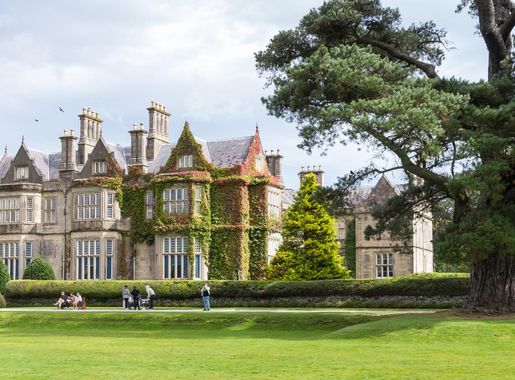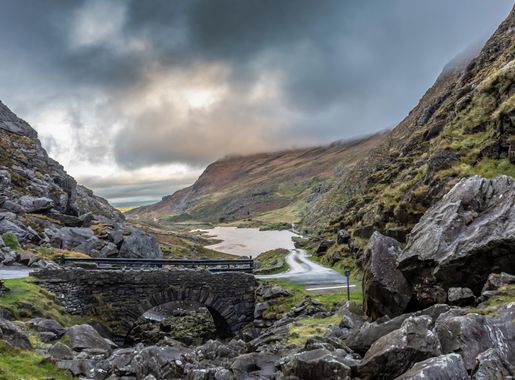
The Enchanting Kerry Way: Ireland's Scenic Trail
Discover Ireland's natural beauty and cultural heritage on the Kerry Way, a scenic 214-kilometer trail offering lush landscapes, rugged mountains, and serene coastal views.
The Kerry Way is one of Ireland's longest and most picturesque walking trails. Located in the southwest of Ireland, this 214-kilometer loop begins and ends in the charming town of Killarney. The trail takes you through lush green landscapes, rugged mountain paths, and serene coastal views. It is the perfect blend of natural beauty and cultural heritage, offering a unique experience for both seasoned hikers and casual walkers. As you trek along the Kerry Way, you will encounter quaint villages, ancient ruins, and stunning lakes. One of the highlights is the breathtaking view of the Lakes of Killarney, set against the backdrop of the majestic MacGillycuddy's Reeks, Ireland's highest mountain range. The trail also passes through the Killarney National Park, home to the impressive Torc Waterfall and the historic Muckross House and Gardens. The Kerry Way is well-marked and offers a variety of terrains, making it accessible for hikers of different skill levels. Whether you choose to complete the entire loop or explore shorter sections, the Kerry Way promises an unforgettable adventure. With its rich history, diverse wildlife, and spectacular scenery, this trail is a must-visit for anyone looking to experience the true essence of Ireland.
Local tips in The Kerry Way
- Pack waterproof clothing and sturdy hiking boots, as the weather can be unpredictable.
- Carry a detailed map and a compass; while the trail is well-marked, some sections can be challenging to navigate.
- Stay in local B&Bs or guesthouses to experience warm Irish hospitality and get insider tips from locals.
- Take breaks at the picturesque villages along the way to enjoy traditional Irish food and music.
- Visit outside of peak tourist season (June-August) for a more peaceful hiking experience.
The Enchanting Kerry Way: Ireland's Scenic Trail
The Kerry Way is one of Ireland's longest and most picturesque walking trails. Located in the southwest of Ireland, this 214-kilometer loop begins and ends in the charming town of Killarney. The trail takes you through lush green landscapes, rugged mountain paths, and serene coastal views. It is the perfect blend of natural beauty and cultural heritage, offering a unique experience for both seasoned hikers and casual walkers. As you trek along the Kerry Way, you will encounter quaint villages, ancient ruins, and stunning lakes. One of the highlights is the breathtaking view of the Lakes of Killarney, set against the backdrop of the majestic MacGillycuddy's Reeks, Ireland's highest mountain range. The trail also passes through the Killarney National Park, home to the impressive Torc Waterfall and the historic Muckross House and Gardens. The Kerry Way is well-marked and offers a variety of terrains, making it accessible for hikers of different skill levels. Whether you choose to complete the entire loop or explore shorter sections, the Kerry Way promises an unforgettable adventure. With its rich history, diverse wildlife, and spectacular scenery, this trail is a must-visit for anyone looking to experience the true essence of Ireland.
When is the best time to go to The Kerry Way?
Unmissable attractions to see
Killarney National Park
Discover the breathtaking beauty of Killarney National Park, a national treasure in County Kerry, where nature and adventure await.
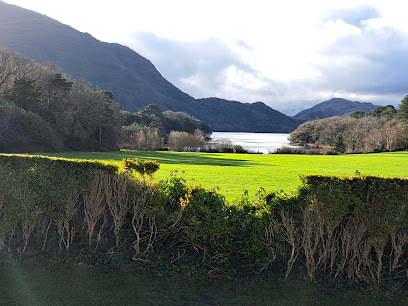
Muckross House
Explore Muckross House: A Victorian gem in Killarney National Park, offering history, stunning gardens, local crafts, and traditional dining experiences.
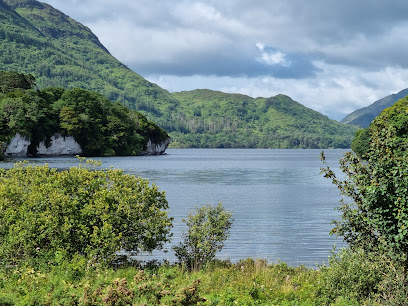
Ross Castle
Explore the enchanting Ross Castle, a historical landmark in Killarney, offering stunning views, rich heritage, and a glimpse into Ireland's past.

Torc Waterfall
Experience the stunning beauty of Torc Waterfall in Killarney National Park, a must-visit destination for nature lovers and adventure seekers.

Kerry Cliffs (Aillte Chiarraí)
Experience the breathtaking views and dramatic landscapes at Kerry Cliffs, one of Ireland's top natural attractions on the Skellig Ring.
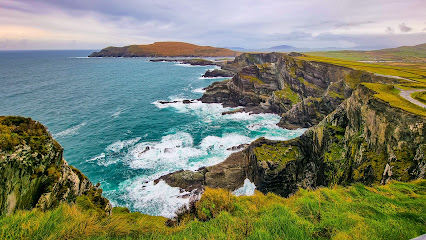
Muckross Abbey
Explore the historical wonders of Muckross Abbey in Co. Kerry, a serene slice of Ireland's rich heritage surrounded by stunning natural beauty.
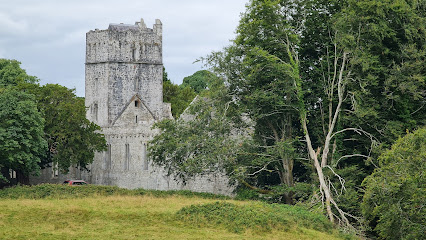
Bantry House
Experience the historical beauty and scenic vistas of Bantry House, a premier attraction in Co. Cork, blending culture, nature, and history.

The Kerry Bog Village Museum
Experience Ireland's rich heritage at The Kerry Bog Village Museum, a charming destination showcasing traditional rural life and culture.

Blennerville Windmill
Explore Blennerville Windmill, an iconic tourist attraction in County Kerry, showcasing Ireland's rich milling history and stunning landscapes.

Molly Gallivans Visitor Centre
Explore local crafts, enjoy traditional Irish tea, and immerse yourself in the culture at Molly Gallivans Visitor Centre in County Kerry.
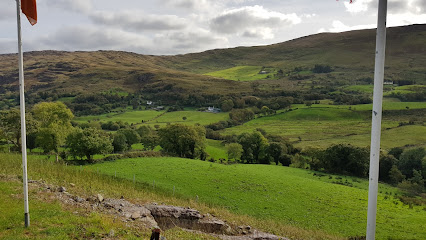
The Taproom at Killarney Brewing & Distilling Co.
Discover the flavors of Killarney at The Taproom, where craft beer meets gourmet pizza in a warm and inviting atmosphere.
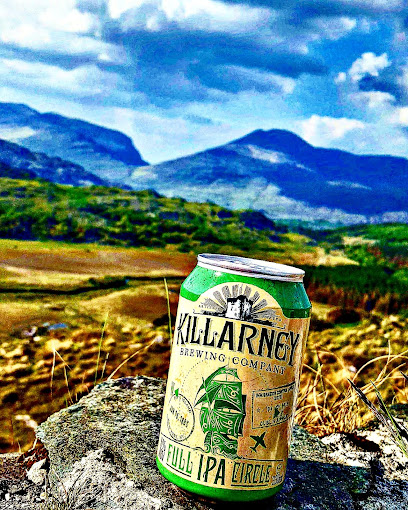
St Mary's Cathedral
Explore the stunning Gothic architecture and serene atmosphere of St. Mary's Cathedral, a must-see tourist attraction in Killarney, Co. Kerry.
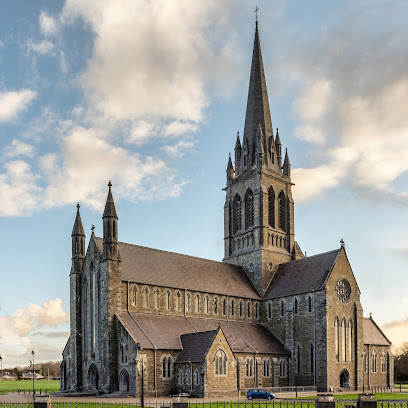
Staigue Stone Fort
Uncover the ancient secrets of Staigue Stone Fort in County Kerry, Ireland, a stunning historical landmark set against breathtaking natural beauty.
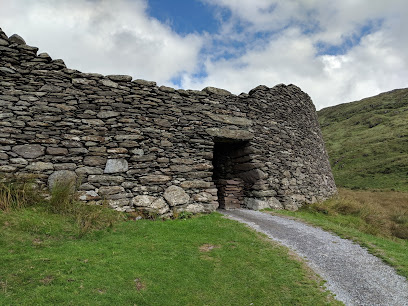
Gleninchaquin Park
Discover the breathtaking beauty of Gleninchaquin Park in County Kerry, where nature and tranquility meet in perfect harmony.
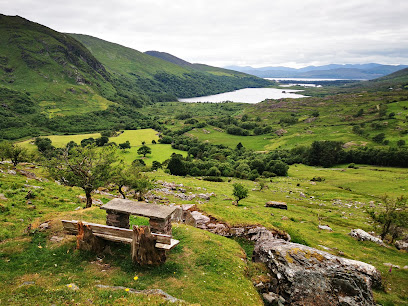
Kerry County Museum
Explore the vibrant history and culture of County Kerry at the Kerry County Museum in Tralee, a treasure trove of Irish heritage.
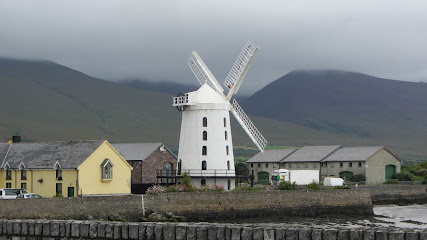
Essential places to dine
Caragh Restaurant & Lounge Bar
Experience the best of Irish cuisine at Caragh Restaurant & Lounge Bar in Killarney – where every meal is a delightful adventure.
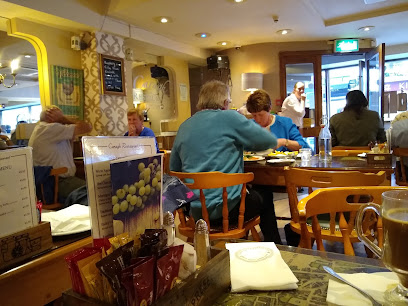
Bricín Restaurant and Boxty House
Savor traditional Irish flavors at Bricín Restaurant in Killarney – home to delicious boxty pancakes & warm hospitality.
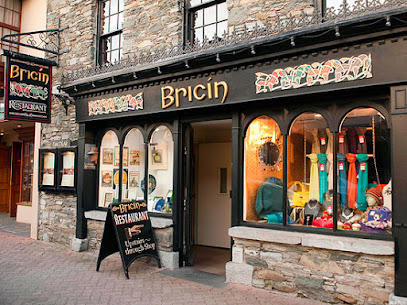
Kitty O’Se’s Seafood and Grill Restaurant
Experience exquisite seafood dining at Kitty O’Se’s Seafood and Grill Restaurant in Killarney - where fresh flavors meet Irish hospitality.
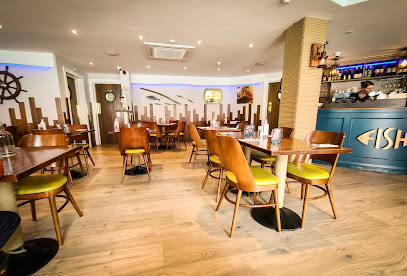
Hannigans Bar, Restaurant & Terrace
Discover Hannigans Bar & Restaurant in Killarney – where Irish flavors meet warm hospitality amidst stunning surroundings.
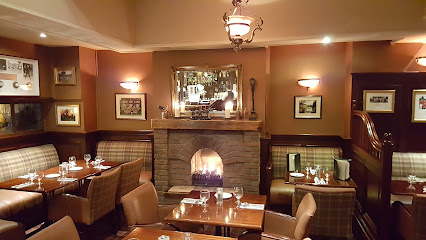
Jacks' Coastguard Restaurant
Discover Jacks' Coastguard Restaurant: A fine dining haven offering fresh seafood and breathtaking coastal views in Cromane Lower.
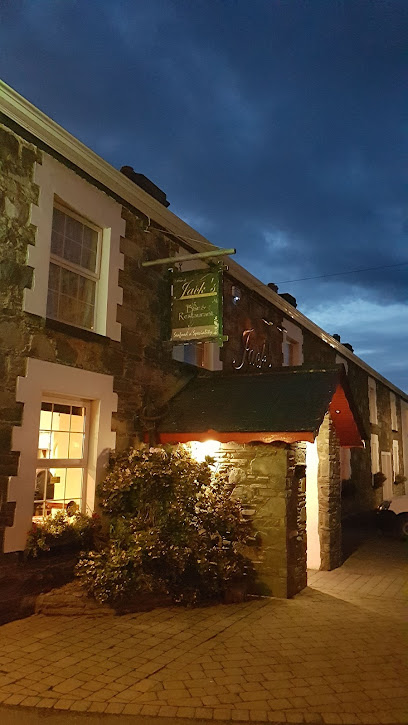
The Kerry Way
Discover the charm of The Kerry Way: where delightful cuisine meets warm Irish hospitality in beautiful County Kerry.
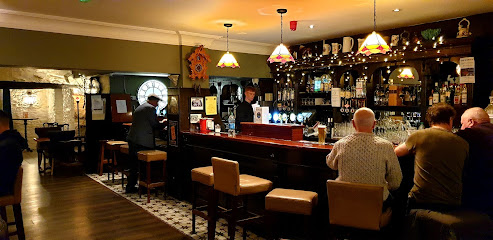
Kayne's Bar & Brasserie
Discover culinary excellence at Kayne's Bar & Brasserie in Killarney—where traditional Irish flavors meet modern dining in a cozy atmosphere.
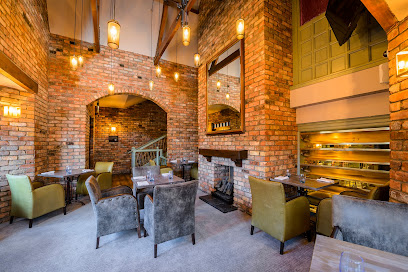
Treyvaud's Restaurant
Experience the best of Irish cuisine at Treyvaud's Restaurant in Killarney—where local ingredients meet exceptional culinary artistry.
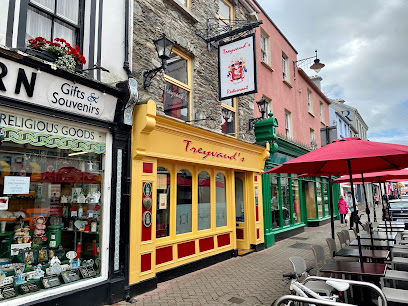
Foley's Townhouse & Restaurant Killarney
Discover authentic Irish flavors at Foley's Townhouse & Restaurant in Killarney - where traditional hospitality meets modern dining excellence.
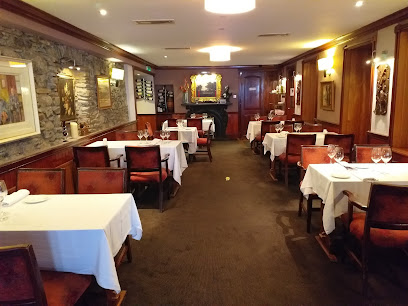
The Boathouse Bistro
Experience exceptional cuisine at The Boathouse Bistro, where stunning views meet exquisite flavors in the heart of County Kerry.
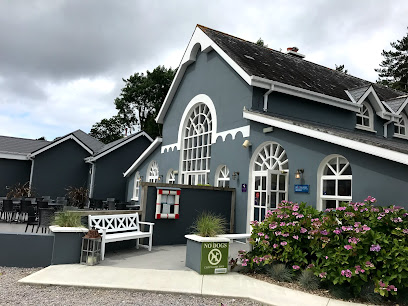
Vendricks Restaurant
Experience delightful tapas and exquisite cocktails at Vendricks Restaurant in Killarney - where every bite tells a story.
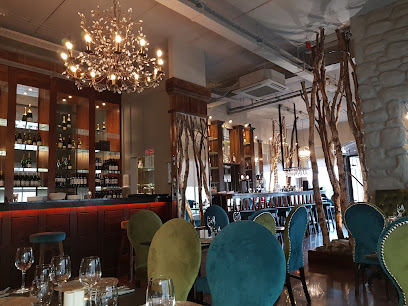
The Lane (Fun Food & Awesome Cocktails)
Discover vibrant dining at The Lane in Killarney – where delicious food meets expertly crafted cocktails in a lively atmosphere.
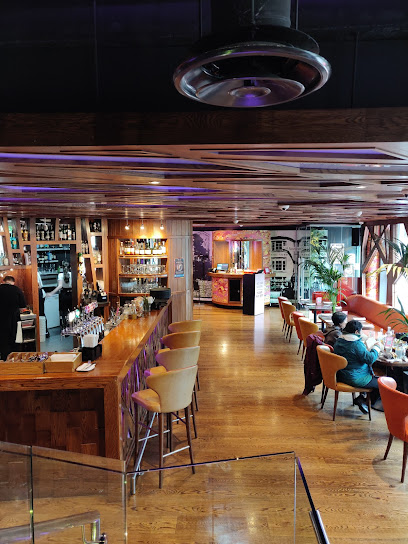
Curious Cat Wine Bar
Discover Killarney's vibrant wine scene at Curious Cat Wine Bar - where exquisite wines meet delightful tapas in a lively atmosphere.
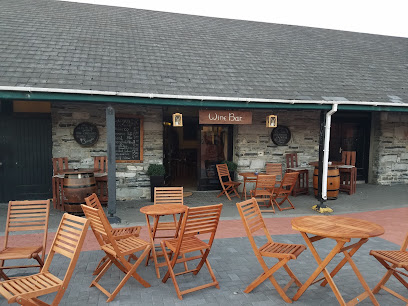
The Tan Yard
Discover The Tan Yard in Killarney: A delightful dining experience featuring locally sourced dishes and warm Irish hospitality.
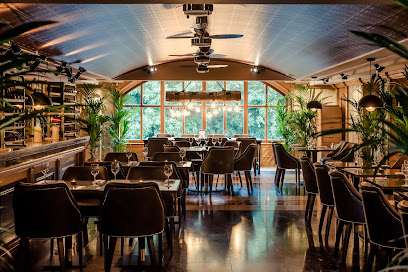
Failte Restaurant
Experience authentic Irish cuisine in the heart of Killarney at Failte Restaurant - a must-visit dining destination for every traveler.
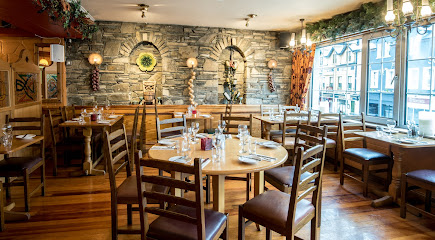
Markets, malls and hidden boutiques
Killarney Outlet Centre
Discover unbeatable deals and charming cafes at Killarney Outlet Centre, your premier shopping destination in the heart of Killarney.
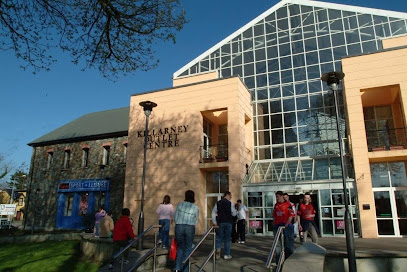
Dunnes Stores
Discover the vibrant shopping experience at Dunnes Stores in Killarney, where quality clothing meets a diverse grocery selection.
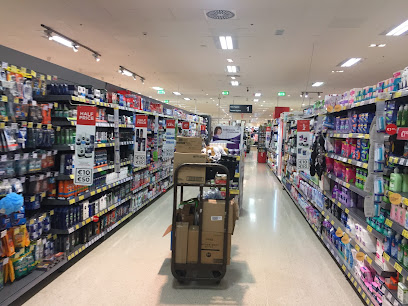
Penneys
Discover trendy and affordable fashion at Penneys in Killarney, the ultimate shopping destination for tourists seeking stylish apparel.
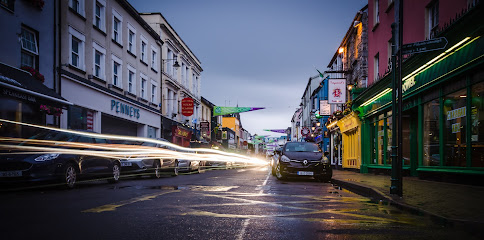
TK Maxx
Explore TK Maxx in Killarney for unbeatable deals on fashion, home goods, and hidden gems in a vibrant shopping atmosphere.

Eason
Explore Eason in Killarney, where books, gifts, and stationery come together to create perfect memories of your Irish adventure.
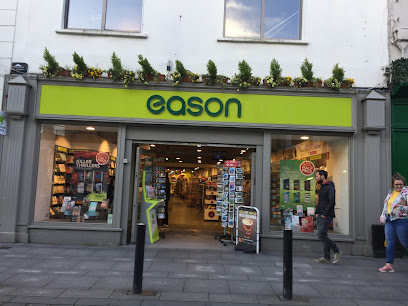
Aran Sweater Market
Explore the finest selection of authentic Irish knitwear at the Aran Sweater Market in Killarney, where quality meets tradition.
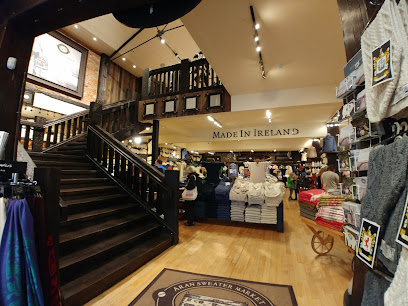
Quills Woollen Market
Explore the best of Irish craftsmanship at Quills Woollen Market in Killarney, your destination for authentic clothing and unique gifts.
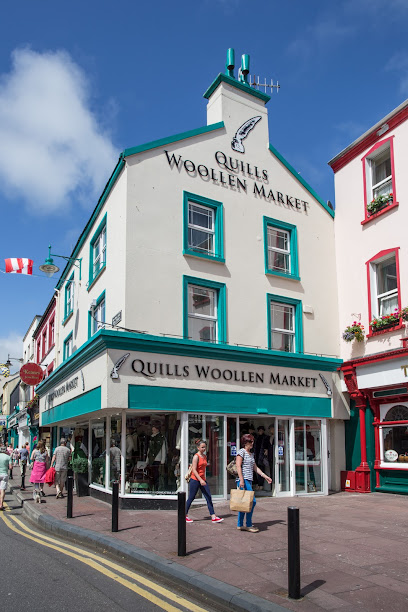
Kerry GAA Store
Shop the best of Kerry GAA merchandise at the Kerry GAA Store in Killarney, where sports meet local culture and heritage.
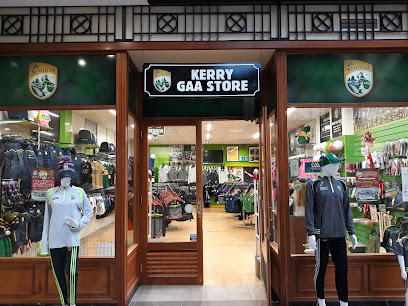
Hazel’s Nuts About Vintage
Explore Hazel's Nuts About Vintage in Killarney for unique vintage clothing treasures that bring timeless style to your wardrobe.
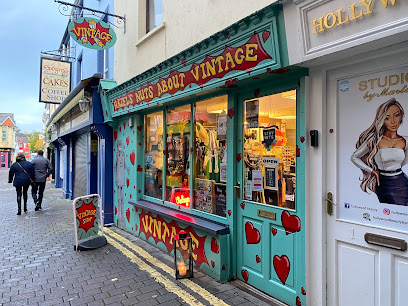
MacBees Boutique Killarney
MacBees Boutique in Killarney offers an exquisite selection of women's clothing and accessories, perfect for any fashion-forward traveler.
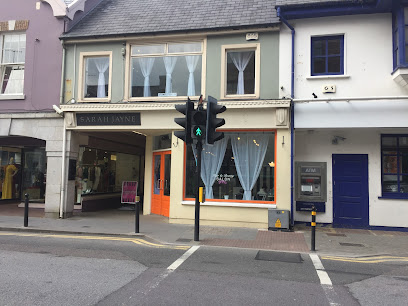
Scarlett Killarney
Discover unique women's fashion and accessories at Scarlett Killarney, a boutique experience in the heart of Co. Kerry.
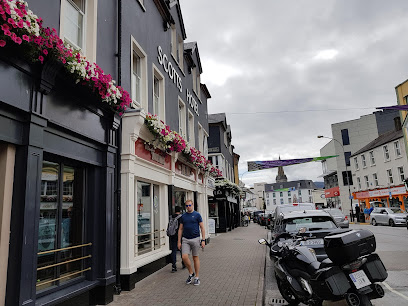
Lynes Of Killarney Childrens' Clothing & Schoolwear
Explore Lynes of Killarney for quality children's clothing and accessories in the heart of Killarney, County Kerry.

Christys
Explore Christys in Killarney for authentic Irish crafts and local delicacies, celebrating the rich heritage of Ireland.
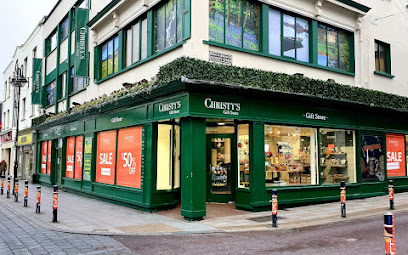
Kilkenny Design
Discover the heart of Irish craftsmanship at Kilkenny Design in Killarney, where every item tells a story of culture and tradition.
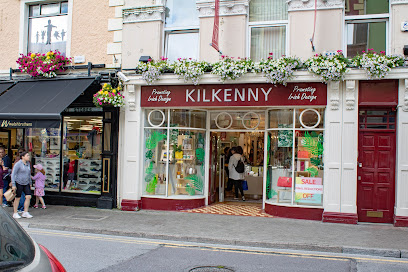
Weavers of Ireland
Weavers of Ireland: Experience traditional Irish craftsmanship and modern fashion in the heart of Killarney's vibrant shopping scene.
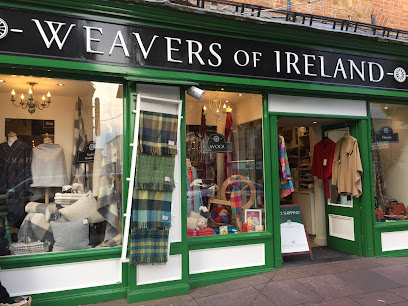
Essential bars & hidden hideouts
J.M. Reidy's
Discover the vibrant spirit of Killarney at J.M. Reidy's - a beloved Irish pub offering traditional fare, lively music, and warm hospitality.
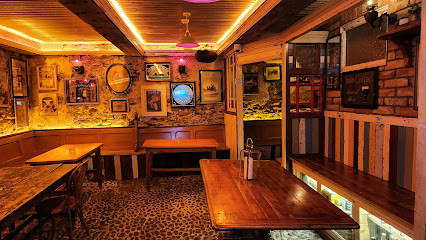
Murphys Bar, Restaurant & Townhouse Killarney
Discover the essence of Irish hospitality at Murphys Bar, Restaurant & Townhouse Killarney - where traditional cuisine meets a vibrant pub atmosphere.
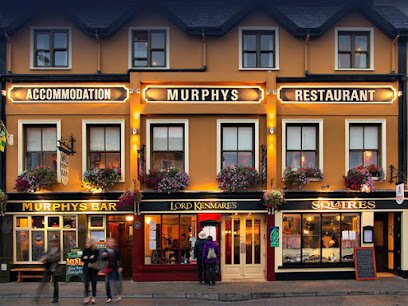
The Laurels Pub & Restaurant
Discover the heart of Killarney at The Laurels Pub & Restaurant, where Irish hospitality meets delicious cuisine in a warm, inviting setting.
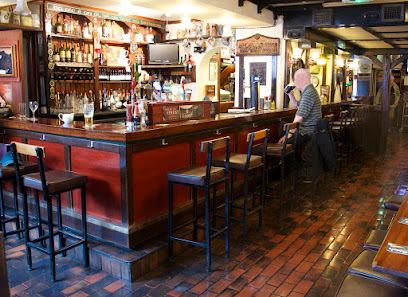
The Shire Bar & Cafe
Discover The Shire Bar & Cafe in Killarney, where traditional Irish hospitality meets lively entertainment and delicious cuisine for an unforgettable experience.
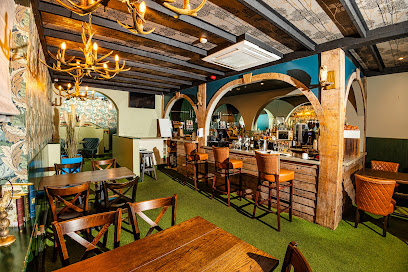
The Taproom at Killarney Brewing & Distilling Co.
Discover the essence of Killarney at The Taproom, where local craft beers and gourmet pizzas come together in a welcoming atmosphere.
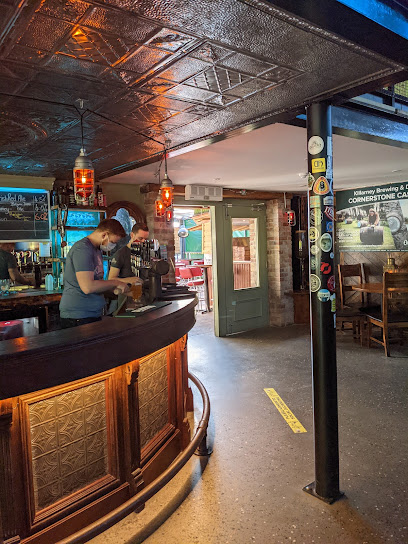
Danny Mann Pub
Enjoy traditional Irish cuisine and live music at Danny Mann Pub in Killarney, a perfect spot for an authentic cultural experience.
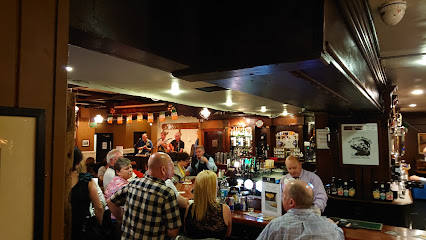
The Killarney Grand
Discover the vibrant atmosphere of The Killarney Grand—a vibrant pub offering traditional Irish cuisine and drinks in the heart of Killarney.
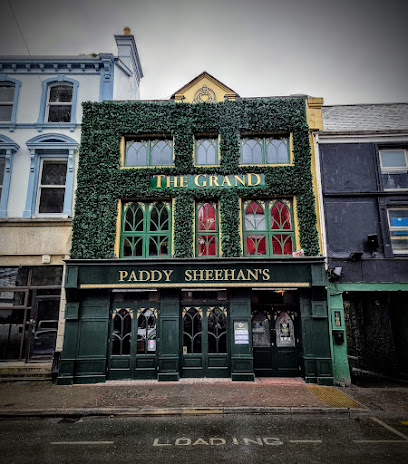
Tatler Jack
Experience the vibrant atmosphere of Tatler Jack, Killarney’s top bar and restaurant, offering live music, delicious food, and a taste of Irish culture.
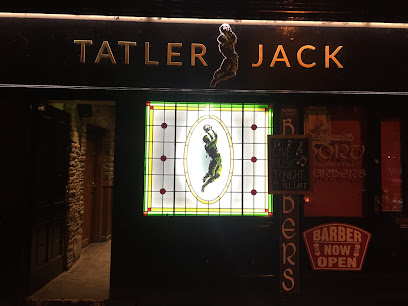
O'Connors Traditional Pub
Discover the heart of Irish culture at O'Connors Traditional Pub in Killarney, where great food, music, and camaraderie await every visitor.
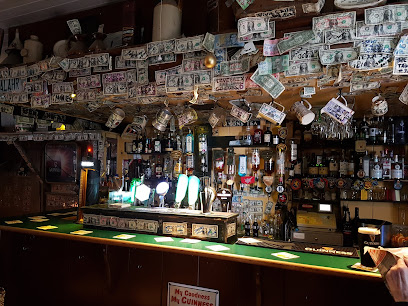
Celtic Whiskey Bar & Larder
Experience the best of Irish whiskey and gourmet cuisine at Celtic Whiskey Bar & Larder, Killarney's premier gastropub destination.

Hannigans Bar, Restaurant & Terrace
Experience the essence of Killarney at Hannigans Bar, Restaurant & Terrace, where traditional flavors meet warm hospitality in a stunning setting.
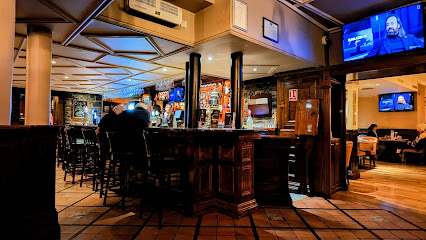
O'Donoghue Public House
Discover the vibrant atmosphere of O'Donoghue Public House in Killarney, where traditional Irish music and delicious cuisine come together in a charming setting.
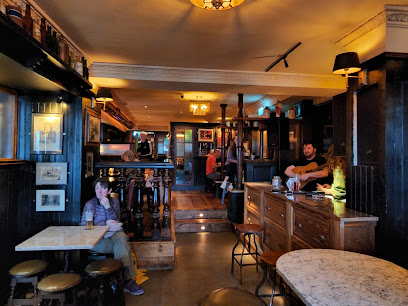
Courtney's Bar
Discover the authentic Irish bar experience at Courtney's Bar in Killarney, where great drinks and a welcoming atmosphere await.
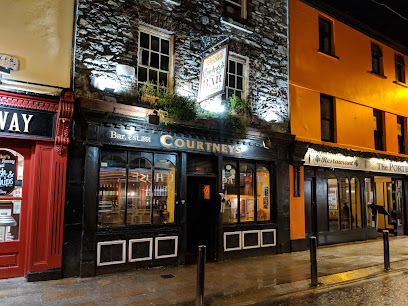
The Kerry Way
Experience the heart of Irish hospitality at The Kerry Way, where scenic beauty meets delightful dining and cozy accommodations in Co. Kerry.
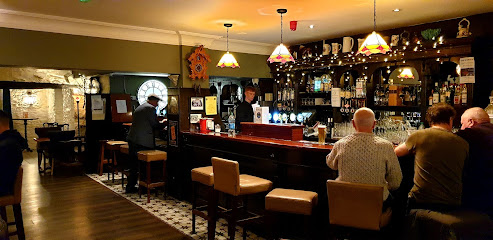
Scotts Bar & Courtyard
Discover the heart of Killarney at Scotts Bar & Courtyard, where traditional Irish hospitality meets delicious cuisine and lively entertainment.
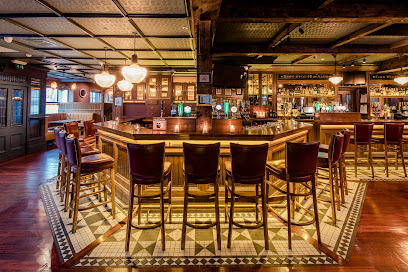
Local Phrases about The Kerry Way
-
- HelloDia dhuit
[dee-ah gwitch] - GoodbyeSlán
[slawn] - YesIs ea
[iss ay-ah] - NoNíl
[neel] - Please/You're welcomeLe do thoil/Tá fáilte romhat
[leh duh hull/tah fawl-cheh row-at] - Thank youGo raibh maith agat
[goh rive mah ag-ut] - Excuse me/SorryMaith thú/Truaillithe
[mah hoo/troo-ah-lee-ha] - How are you?Conas atá tú?
[kun-us ah-taw too] - Fine. And you?Tá mé go breá. Agus tú?
[taw may goh brah. ag-us too] - Do you speak English?An labhraíonn tú Béarla?
[ahn law-vree-un too bayr-la] - I don't understandNí thuigim
[nee hug-im]
- HelloDia dhuit
-
- I'd like to see the menu, pleaseBa mhaith liom an mianu a fheiceáil, le do thoil
[bah wah lyum on me-an-oo ah eck-ah-il, leh duh hull] - I don't eat meatNí ithim feoil
[nee ih-im feh-il] - Cheers!Sláinte!
[slawn-cheh] - I would like to pay, pleaseBa mhaith liom íoc, le do thoil
[bah wah lyum ee-uk, leh duh hull]
- I'd like to see the menu, pleaseBa mhaith liom an mianu a fheiceáil, le do thoil
-
- Help!Cabhraigh!
[coh-ray] - Go away!Imigh uaim!
[ih-mig oo-im] - Call the Police!Glan an Gharda!
[glahn ahn gard-ah] - Call a doctor!Glaoigh ar dochtúir!
[gwee-ahg air duck-too-ir] - I'm lostTá mé caillte
[taw may kahl-cheh] - I'm illTá mé tinn
[taw may chin]
- Help!Cabhraigh!
-
- I'd like to buy...Ba mhaith liom ceannach...
[bah wah lyum can-uk] - I'm just lookingNíl mé ach ag féachaint
[neel may akh eg fay-uk-int] - How much is it?Cé mhéad atá air?
[kay vayd ah-taw air] - That's too expensiveTá sé ró-dhaor
[taw shay row-gweer] - Can you lower the price?An féidir leat an praghas a laghdú?
[ahn fay-dir lat on prah-gus ah lay-goo]
- I'd like to buy...Ba mhaith liom ceannach...
-
- What time is it?Cén t-am é?
[kayn tahm ay] - It's one o'clockTá sé a haon
[taw shay ah hayn] - Half past (10)Leathuair tar éis a deich
[lah-hoo-ir tahr aysh ah deh] - MorningMaidin
[mah-jin] - AfternoonTráthnóna
[traw-noh-nah] - EveningTráthnóna
[traw-noh-nah] - YesterdayInné
[in-ay] - TodayInniu
[in-yoo] - TomorrowAmárach
[ah-maw-rakh] - 1Aon
[ayn] - 2Dó
[doh] - 3Trí
[tree] - 4Ceathair
[cah-hir] - 5Cúig
[koo-ig] - 6Sé
[shay] - 7Seacht
[shah-kt] - 8Ocht
[ukht] - 9Naoi
[nee] - 10Deich
[deh]
- What time is it?Cén t-am é?
-
- Where's a/the...?Cá bhfuil...?
[kaw wil] - What's the address?Cad é an seoladh?
[kahd ay ahn shoh-lah] - Can you show me (on the map)?An féidir leat é a léiriú (ar an léarscáil)?
[ahn fay-dir lat ay ah layr-oo (er ahn layr-skawl)] - When's the next (bus)?Cathain atá an chéad (bus)?
[kah-hin ah-taw ahn khayd (bus)] - A ticket (to ....)Ticéad (go dtí ....)
[tick-ayd (goh dee)]
- Where's a/the...?Cá bhfuil...?
History of The Kerry Way
-
The Kerry Way has been inhabited since prehistoric times. Evidence of early settlers is found in the form of megalithic tombs, stone circles, and ogham stones scattered along the trail. These ancient markers point to a time when early inhabitants navigated these rugged terrains, leaving behind a rich archaeological legacy.
-
During the Bronze Age, the region around The Kerry Way was a hive of activity. This period saw advancements in metalworking, and many artifacts such as tools, weapons, and decorative items have been unearthed. The discovery of bronze hoards and burial sites provides a glimpse into the lives and customs of the people who once roamed these lands.
-
The arrival of Christianity in Ireland around the 5th century AD left a lasting mark on The Kerry Way. Monastic settlements such as those in the Skellig Michael, a UNESCO World Heritage Site, highlight the region's spiritual significance. The area is dotted with ancient churches, high crosses, and round towers, showcasing the spread of early Christian culture.
-
In the late 8th and early 9th centuries, Viking raids impacted the region. The Norsemen established coastal settlements and engaged in trade and conflict with the local Gaelic chieftains. Evidence of Viking influence can be found in place names and archaeological finds along The Kerry Way.
-
Medieval times saw the rise of powerful Gaelic clans and the construction of imposing castles. The O'Sullivan and O'Donoghue clans were among the most influential in the area. Castles such as Ross Castle and Ballycarbery Castle served as strongholds and are key historical landmarks along the trail.
-
The mid-19th century brought severe hardship to the region with the onset of the Great Famine (1845-1852). The population was decimated due to starvation and mass emigration. The remnants of famine cottages and abandoned villages along The Kerry Way are poignant reminders of this tragic period in Irish history.
-
The early 20th century was a period of significant political upheaval in Ireland. The struggle for independence from British rule saw many local men and women participate in the Irish War of Independence (1919-1921) and the subsequent Civil War (1922-1923). Memorials and plaques along the trail commemorate those who fought and died for Irish freedom.
-
The Kerry Way is not only a path through history but also a route through vibrant Gaelic culture. Efforts to revive and preserve the Irish language and traditions have been strong in this region. Festivals, music, dance, and folklore are integral to the local culture, offering travelers a rich, immersive experience.
The Kerry Way Essentials
-
The Kerry Way is located in County Kerry, Ireland. The nearest airport is Kerry Airport (Farranfore), which is approximately 20 kilometers from Killarney, a starting point for The Kerry Way. This airport has direct flights from major European cities. Alternatively, Shannon Airport and Cork Airport are about a two-hour drive away. From Dublin, you can take a train or bus to Killarney, which takes about 3-4 hours.
-
Public transportation options include buses and trains. Bus Eireann operates regular services to and within County Kerry. Trains run by Irish Rail connect major cities to Killarney. Taxis are available but can be costly for long distances. Renting a car is a popular option for exploring at your own pace, though driving on narrow, winding roads can be challenging for those not used to it. Bicycle rentals are also available for those wishing to travel the route on two wheels.
-
The official currency is the Euro (€). Credit and debit cards are widely accepted in hotels, restaurants, and shops. ATMs are available in towns along The Kerry Way, but it is advisable to carry some cash, especially when venturing into more remote areas. Contactless payment is increasingly popular and convenient for small purchases.
-
The Kerry Way is generally safe for tourists. However, standard precautions should be taken. Avoid leaving valuables in plain sight and be cautious when walking alone at night. The area has a low crime rate, but it's always good to stay vigilant. Pay attention to weather conditions and be prepared for sudden changes, as the weather can be unpredictable.
-
In case of emergency, dial 999 or 112 for immediate assistance. There are medical facilities in Killarney and other larger towns along The Kerry Way. It is recommended to have travel insurance that covers medical emergencies. Pharmacies are available in towns for minor health issues. For mountain rescue, contact the Kerry Mountain Rescue Team.
-
Fashion: Do wear comfortable and weather-appropriate clothing, including waterproof gear. Don't wear high heels or impractical footwear for walking trails. Religion: Do respect local religious sites; many churches are open for visitors. Don't disrupt services or take photos without permission. Public Transport: Do have exact change or a Leap Card for buses. Don't talk loudly or disturb other passengers. Greetings: Do greet people with a smile or a simple 'hello.' A handshake is standard for formal greetings. Don't be overly familiar with strangers. Eating & Drinking: Do try local dishes like Irish stew and seafood. Accept offers of tea or drinks graciously. Don't refuse hospitality, as it may be considered rude.
-
To experience The Kerry Way like a local, consider starting your journey early in the morning to avoid crowds. Visit local pubs and enjoy traditional Irish music sessions. Engage with locals; they are often friendly and willing to share tips and stories. Don't miss lesser-known spots like the Gap of Dunloe and the Black Valley for more serene experiences.
Nearby Cities to The Kerry Way
-
Things To Do in Tralee
-
Things To Do in Dingle
-
Things To Do in Cork
-
Things To Do in Kinsale
-
Things To Do in Limerick
-
Things To Do in Ennis
-
Things To Do in Salthill
-
Things To Do in Galway
-
Things To Do in Waterford
-
Things To Do in Kilkenny
-
Things To Do in Athlone
-
Things To Do in Westport
-
Things To Do in Wexford
-
Things To Do in Bray
-
Things To Do in Dublin

